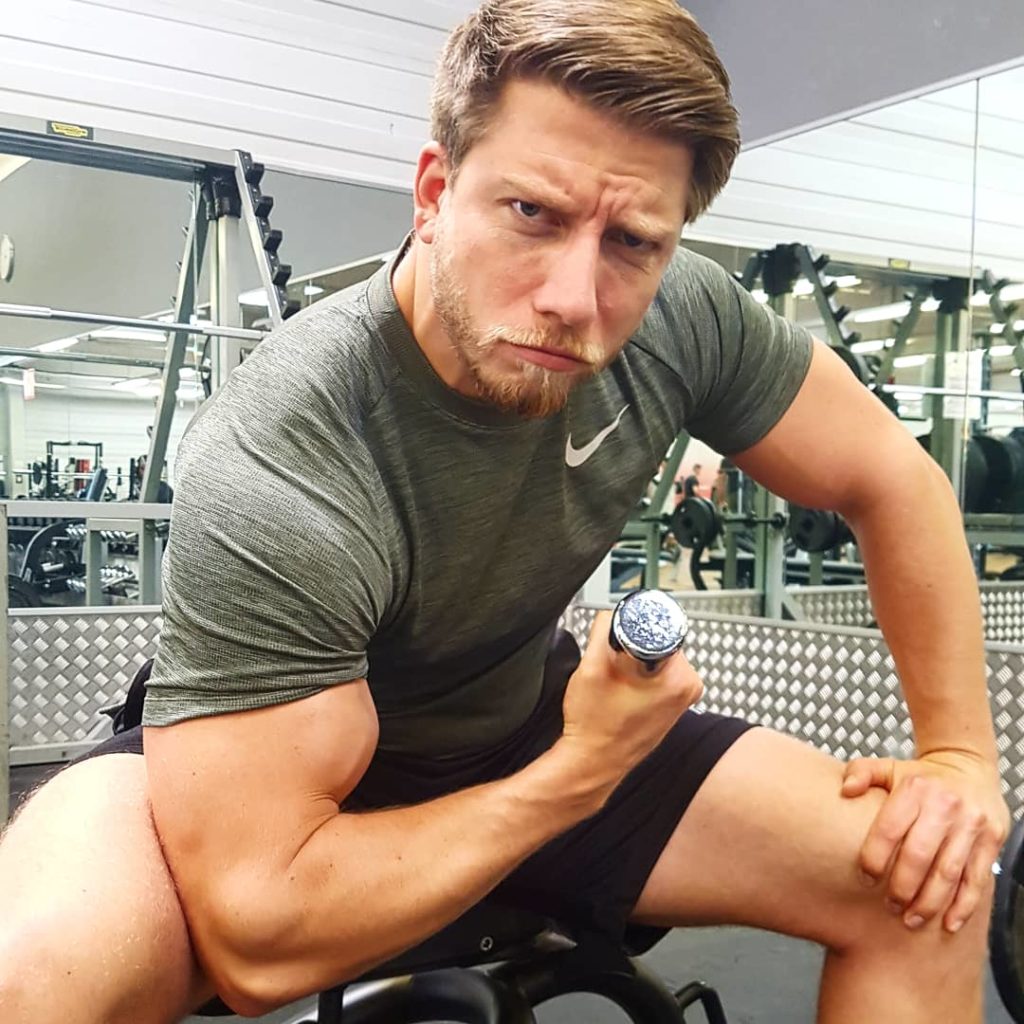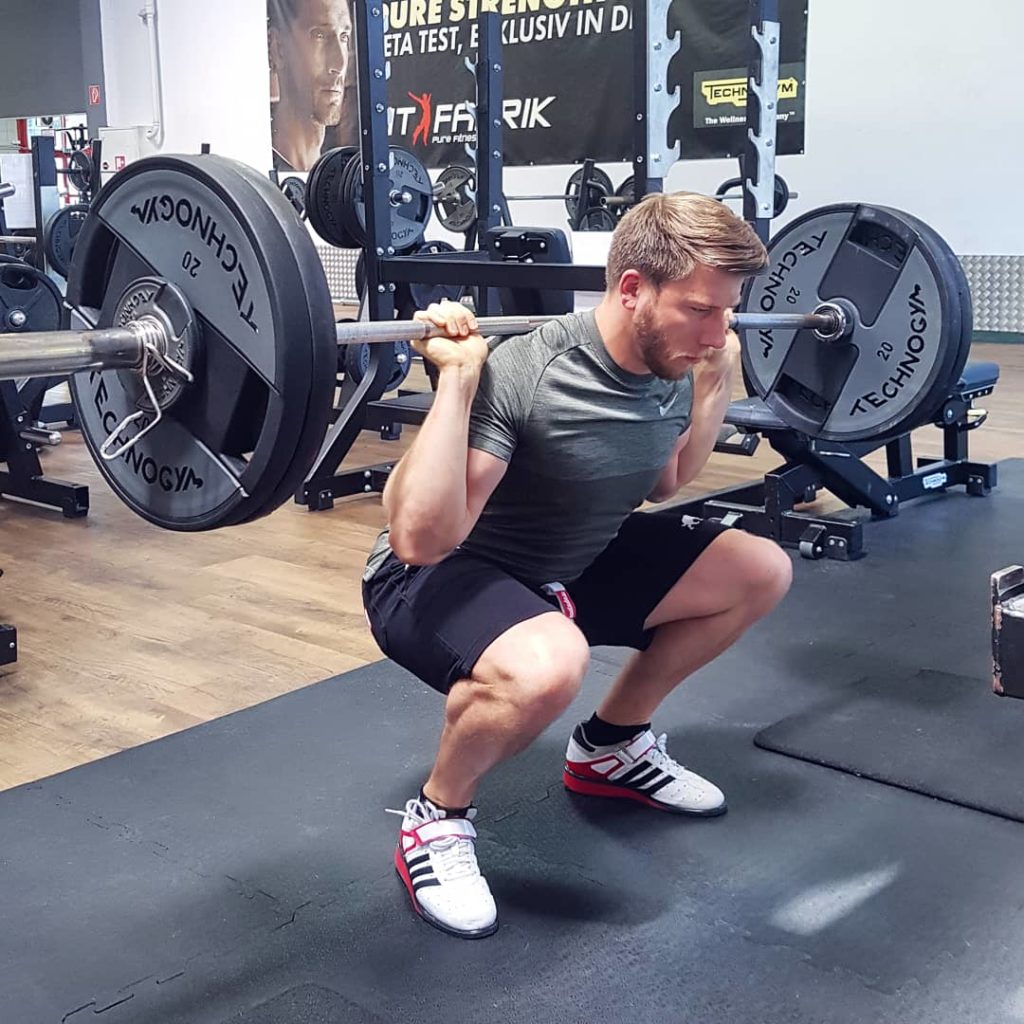Anyone who goes to the gym knows the picture: The already bending dumbbell is somehow pulled upwards, and a whole body is over-motivated to the biceps -Curling used, in the back corner is a lonely cardio bunny who does all the exercises with 2 kg dumbbells. But who is the best at building muscle?
To get rid of a common myth right from the start: No, for ideal muscle building training it is not absolutely necessary to exercise or even put a lot of weight on the muscle overload. You still have to challenge yourself or make an effort – but how? The decisive factors and what you should be aware of can be found in this article.
Technique
Good technique is the be-all and end-all of putting the strain on the target muscle and to be able to train this as well as possible. This also prevents injuries.
In the future I will upload your own training videos for most of the exercises. But there are already numerous serious tutorials on YouTube where you can get tips.
A relevant aspect in connection with technology should be mentioned here: the range of motion.
Intensity
In training theory, one speaks in connection with the intensity of a “strong supra-threshold stimulus”. This formulation means to stress the muscle so that it reacts to this stimulus with adaptation and improves. The muscle is – generally speaking – more efficient.
Here you also have to strain the degree of exercise. This term refers to the number of repetitions made compared to what could have been done. So if you only perform ten repetitions in an exercise, for example, even though 20 would have been possible, the degree of exertion is very low and accordingly the stimulus to the muscle is insufficient.
Frequency
The frequency (training frequency) is an essential factor that is related to regeneration. The optimal training frequency per muscle group is between one and three days per week. This results from the duration of the protein biosynthesis (about three days) and the regeneration time of the muscles (depending on the muscle group between about 24 and 72 hours).
Volume
The training volume results from number of sets x number of repetitions of the muscle group to be trained. It can and should vary depending on the muscle group. Similar to the frequency, it is important to find an optimal and individually adapted ratio. In this regard, the repetition ranges, which vary depending on the training goal, have to be observed.
8 to 12 repetitions have become common for the hypertrophy area, with the transitions to other muscle adaptations (maximum strength, intramuscular coordination, strength endurance, etc.) flowing and these figures are only to be regarded as guidelines. Roughly speaking, the following can be stated: Less than 6 repetitions more train intramuscular coordination (maximum, relative strength). With 15 and more repetitions rather strength endurance is improved. I recommend roughly 6 to 15 repetitions for intelligent muscle building training.
It should also be noted that different types of strength training can never be completely separated from one another, i. H. that you can never train in isolation in this regard. With hypertrophy training, you always train other areas (speed strength, maximum strength, explosive strength, strength endurance) with – and vice versa.
The optimal training parameters for muscle building training I define individually for all my clients. Hypertrophy training requires an intelligent approach. If you want to know exactly how much of what to do in the gym, take a look at my offers.
Nice to know:
How do these repetition ranges arise? Ultimately, these numbers are related to the duration of resistance training (duration of tension in the muscles). The optimal duration of tension for muscle building training is around 45 seconds. Theoretically, it is now assumed that a complete repetition takes about 5 seconds, which results in 9 repetitions in 45 seconds.
This period is known as Time under Tension (TUT) and is used again and again in bodybuilding. (One example is MTUT by Dennis James, who prefixed this training with his nickname ‘Menace’.)

Conclusion: Volume is an essential factor in muscle building training. Ultimately, more volume means greater muscle adaptation and more intense hormonal and metabolic responses.
Anyone who still believes that only heavy weights > muscle growth these days lead,
is misinformed.
For the ambitious bodybuilders among you, I would advise you to contact Dennis James’ Menace-Time-under -Tension training (MTUT) and not to Markus Rühl’s difficult-and-wrong philosophy.
Cadence
The cadence means the division of the duration of movement into different Sections.
A movement consists of a concentric (overcoming), isometric (holding) and eccentric (yielding) phase. Here is an example of biceps curls: Lifting the weight from below is the concentric phase. Maintaining the tension at the reversal point is the isometric phase, while the controlled lowering is the eccentric phase. A typical example of a cadence is 2/1/2, with the numbers indicating the seconds per phase.
For hypertrophy, the eccentric movement is decisive, because with it the TuT can be lengthened and higher loads can be overcome. In addition, the stretching stimulus on the muscles is ensured. It is an additional factor in muscle growth.
Progression
Progression means the steady increase. Usually it is only reduced to the training performance. However, one also speaks of progression if, for example, the performance is the same as in the last training session, but you can perform the movement better (technique), control your weight better (technique, strength, inter- / intramuscular coordination) Feel the target muscles better during the exercise (technique, muscle-mind connection) and / or control the muscles even better during the exercise.
That means: Not only the weight should be positive during progressive training change. 😉
Conclusion
If you want to grow your muscles in a targeted manner, you should act accordingly. Exercising heavily and incorrectly or constantly working close to the 1-Rep-Max is definitely not productive. If muscle growth is your primary goal, you are taking no advantage of training for strength. However, muscle building training always goes hand in hand with an increase in strength.
Note: This article was only about training-related issues. Other essential factors such as regeneration, calorie intake, macronutrients etc. are and were discussed in other blog posts. As you can see: There are a few things to consider when it comes to building muscle.


